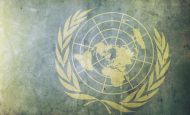Another UN Agency Issues “50 Year” Campaign Report
On September 12, 2017, the United Nations Conference on Trade and Development (UNCTAD) released “UNCTAD Assistance to the Palestinian People: Developments in the Economy of the Occupied Palestinian Territory.” This report, while published by a UN body that is supposed to focus on trade, investment, and development, instead is part of a Palestinian and UN-initiated propaganda campaign to demonize Israel. As with the other publications issued as part of this political war (see for example UN Women, ESCWA), UNCTAD spurns its mandate, relies on non-credible source material, and ignores material economic factors, resulting in a publication that fails to issue any conclusions that would actually lead to development and peace in the region.
UNCTAD’s singular conclusion regarding problems it finds in the Palestinian economy – is that the “fifty years” of Israel’s “occupation” is solely to blame for economic problems in the Palestinian Authority.
Unlike its other country and regional reports, this report does not undertake a rigorous economic analysis or examine the many factors, both cultural and political impacting the Palestinian economy. For instance, while UNCTAD blames the “occupation” for differences in real GDP per capita overtime, many other reasons exist. For example, when looking at the graph provided for real GDP per capita in 1995-2016, there has been steady growth in the Palestinian economy with the exception of dips during points of significant Palestinian-initiated violence – for instance the surge of terror attacks in the early 2000s, the Hamas takeover of Gaza in 2006, and the 2014 Gaza war (see graph on page 1 of report).
The report also fails to include the myriad of Palestinian domestic factors influencing the economy–intra-Palestinian conflict, endemic corruption, mass diversion of resources to terror infrastructure, refusal to implement new technologies in the water sector, the promotion of boycotts against the Israeli economy, the largely agricultural nature of the Palestinian economy, minimal commitment to research and innovation, and traditional cultural norms limiting women in the workforce.
Likewise, the report fails to place Palestinian economic indicators within a regional context. For example, when looking at other countries in the Middle East, the Palestinian real GDP growth rate of 4.1% in 2016 is within the norm, if not one of the highest in the region. Neighboring countries’ real GDP growth rates in 2016 were 4.2% in Egypt, 2.3% in Jordan, and 1.8% in Lebanon. UNCTAD’s political conclusion , therefore, lacks factual support.
Comparing real GDP growth rates pre and post-1967 would further demonstrate whether Israel’s presence in the West Bank has affected the Palestinian economy, and in what ways. Despite the fact that pre-1967 economic data is rare, a 2013 article in Middle Eastern Studies was able to gather some estimates and notes that real GDP growth rate from 1950 to 1968 was 3.38%.1 This estimate represents a lower real GDP growth rate than the current 4.1% cited in UNCTAD’s report – again, demonstrating that UNCTAD’s publication was aimed at bolstering Palestinian propaganda rather than a credible, evidence-based document.
Furthermore, unlike the politicized UNCTAD report, the International Monetary Fund (IMF) published a study in August 2016 that analyzes the Palestinian economy without once mentioning the term “occupation.” The IMF report instead notes a variety of factors affecting the Palestinian economy, including “economic and political uncertainties,” risks (such as declining donations to the Palestinian Authority), a stalled peace process, and an uncertain domestic political climate.
UNCTAD does cite this particular IMF analysis. However, UNCTAD completely manipulates its findings, claiming that the IMF found that “under the most conservative assumptions, if there had been no occupation, real GDP per capita in the Occupied Palestinian Territory would currently have been nearly 40 percent higher…” On the contrary, what the IMF report really says is that their analysis shows that “absent the political uncertainty and restrictions of the past twenty years real GDP per capital (PPP) would have been significantly higher…with gaps ranging from a near 40 percent…” (emphasis added).
Finally, while the citations in the UNCTAD report refer to documents produced by the International Labor Organizations (ILO), IMF, other UNCTAD reports, the UN Office for the Coordination of Humanitarian Affairs (UN-OCHA), and the UN High Commissioner for Human Rights (OHCHR), among others, many of these documents rely on information provided by politicized Israeli and Palestinian NGOs, are written by the same individuals, and are based on claims from the same narrow group of political advocacy NGOs and self-referential UN sources, that in turn, are based on these same sources.

